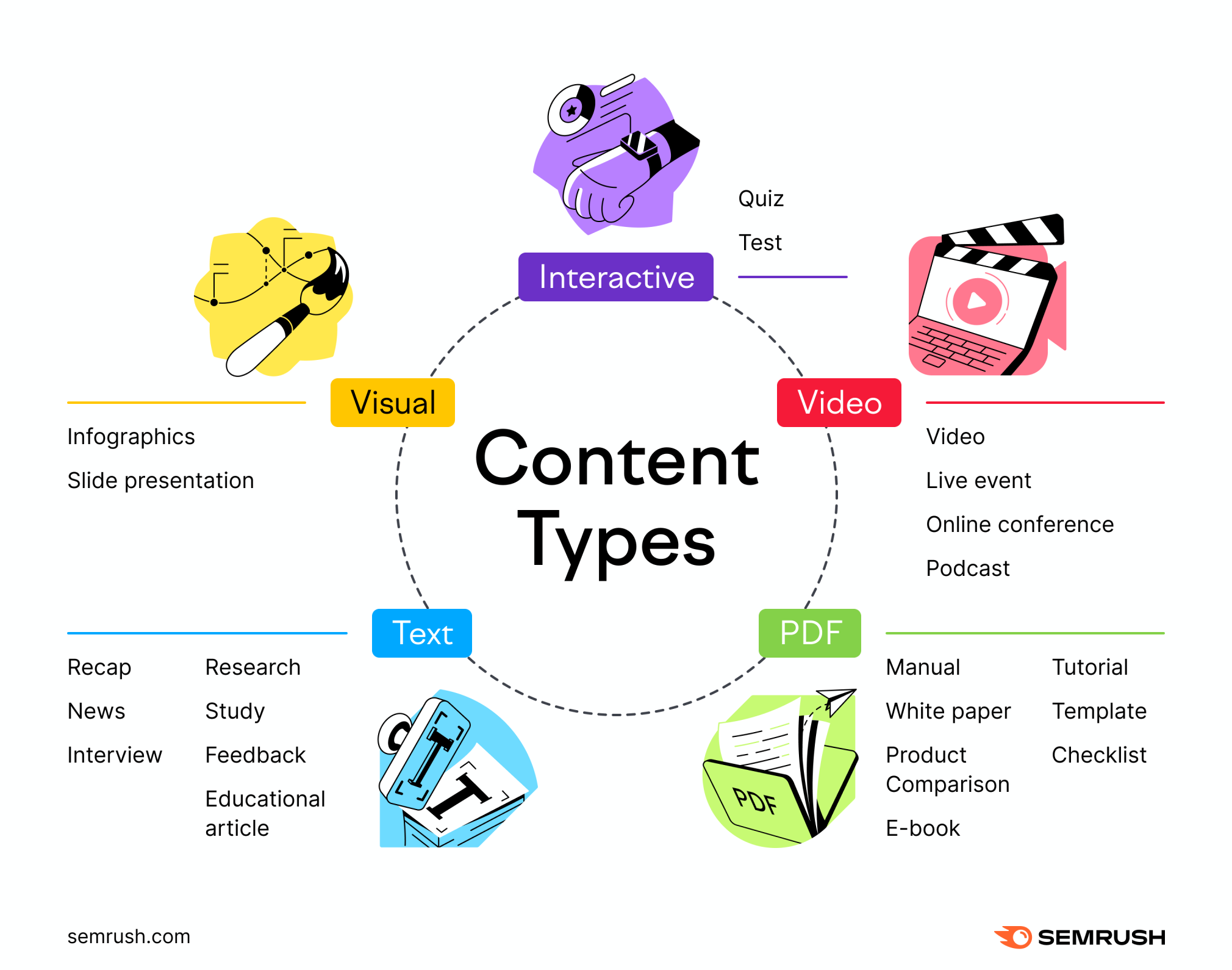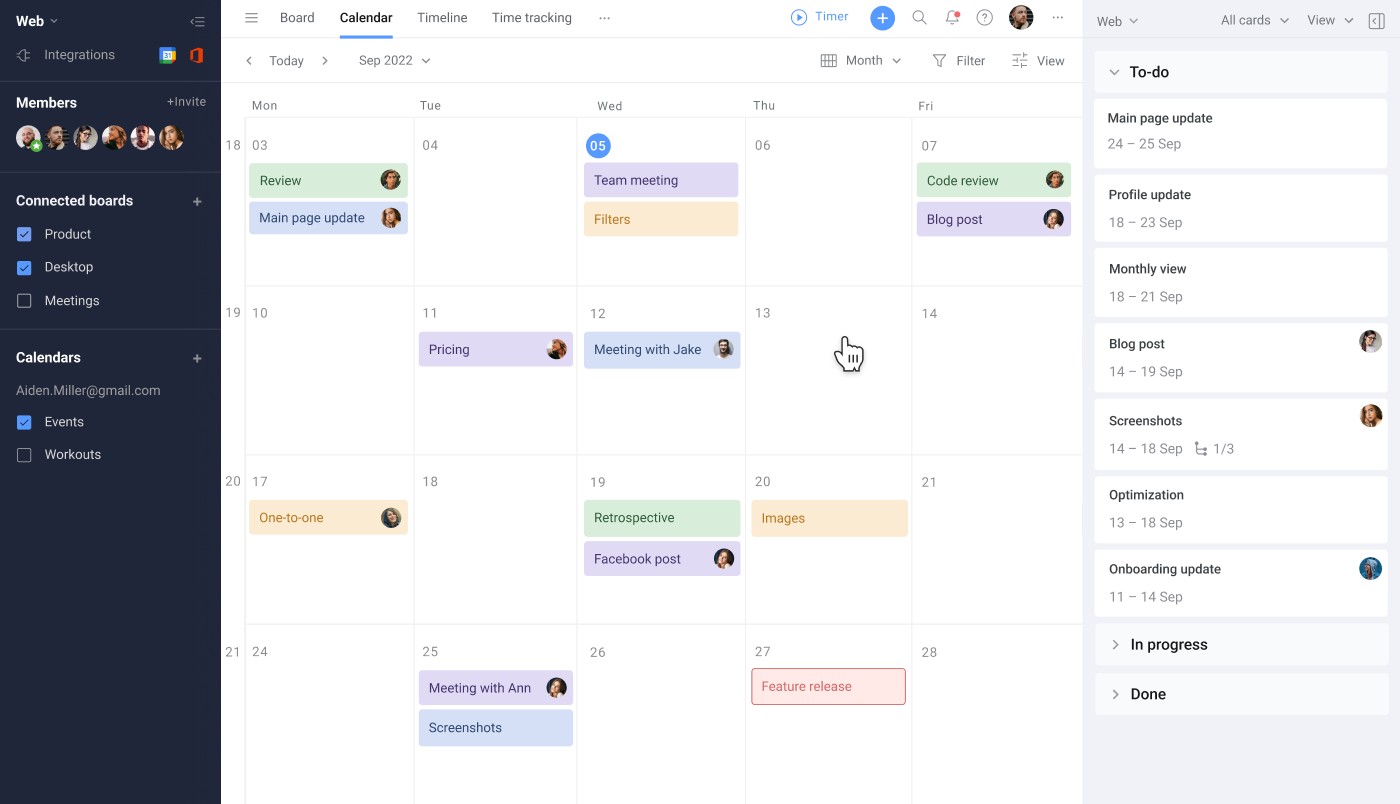
When it comes to achieving strong results in search engine rankings, creating the right kind of content is crucial. Think of it as a way for people to discover your business in the vast online landscape. Without constant engagement, even the most successful businesses can be forgotten quickly. Creating good content isn’t just about being seen; it’s about becoming a part of your audience’s daily life. While some aim for viral success, savvy creators know that consistent, high-quality content is what keeps a business in people’s minds.
Here’s the truth: you don’t need to be loud to get noticed. By telling your story strategically and authentically in every piece of content, you create a lasting connection with people, even after they’ve scrolled past.
Table of Contents
Understanding the Basics of Content Creation
Target Audience
Before creating content, it’s crucial to define your target audience. This means understanding who will read, watch, or interact with your content. Are they young adults interested in technology? Or perhaps homeowners looking for DIY tips? Knowing this guides the tone and style of your content.
For instance, if you’re aiming at professionals seeking industry insights, a detailed blog post might be more effective than a casual video. Get to know their preferences and pain points. This knowledge shapes not only what you create but also how you convey your message.
Content Goals
Setting clear content goals is essential for measuring success. Do you want to inform readers about a new product? Maybe your aim is to entertain or inspire them with creative stories? Each goal demands different approaches in content creation.
A simple list can help clarify these objectives:
- Educate on specific topics.
- Drive traffic to a website.
- Increase brand awareness.
- Engage users on social media platforms. With goals outlined, crafting content that aligns with these aims becomes easier.
Right Format
Choosing the right format is another key step in content creation. Different formats cater to various needs and audiences:
- Blog posts are great for deep dives into subjects.
- Videos can showcase personality and demonstrate products visually.
- Infographics simplify complex data into digestible visuals.
Each has its place within an effective strategy; picking one depends on what best suits the message and audience needs.

Content Lifecycle
Understanding the lifecycle of content helps maintain relevance over time:
- Creation involves researching topics, writing drafts, or scripting videos—this stage sets quality standards for everything that follows.
- Publication marks when your work goes live—be it on a blog platform or across social media channels; timing here can influence reach significantly due to varying user activity patterns online.
- Promotion extends beyond mere publication—it includes sharing via email newsletters, leveraging influencers’ networks, and even paid advertising strategies designed specifically around getting more eyes on what you’ve produced.
The Importance of High-Quality SEO Content

Search Visibility
Quality content boosts your search engine visibility. When you create material that resonates, search engines take notice. They prioritize pages they believe will serve the searcher’s intent best.
Imagine you’re crafting an article on healthy eating. If it’s full of useful tips and backed by research, it could climb up the rankings. This makes your page more visible when someone searches for nutrition advice.
But don’t stop at just facts and figures. Your content should also be enjoyable to read. This blend keeps users coming back for more.
User Engagement
Engaging content can lead to longer dwell time on your site. It’s like inviting guests into a cozy living room rather than a stark hallway; they’ll want to stay a while.
For example, let’s say you run a blog about gardening. You write posts with vivid descriptions of plants and easy-to-follow care instructions—readers are likely to stick around and explore more posts or even subscribe.
This connection matters because search engines see this behavior as a sign that people find value in what you offer.
Ranking Factors
High rankings hinge on three things: relevance, authority, and trustworthiness.
- Relevant content matches what users are searching for.
- Authority is built through quality information that showcases expertise.
- Trust comes from accurate data and honest writing practices.
To illustrate this point, think about creating an online guide for learning guitar:
- Ensure each lesson relates directly to common questions beginners ask.
- Share insights from experienced musicians or music teachers.
- Use testimonials from students who have successfully learned using your guide.
These steps help establish your site as reliable which can improve its position in search results.
Remembering these factors is key when planning new content or updating existing pages.
Creating Engaging Content for Different Platforms
Platform Norms
Every social media platform has its own culture and norms. To create content that resonates, you must tailor your tone and style. For instance, LinkedIn favors professional and informative posts. It’s where you share industry insights or career achievements. Instagram, on the other hand, is visual-driven. Here, a casual voice paired with striking images works best.
Creating evergreen content is key across platforms. This type of content remains relevant over time, continually drawing in new viewers without needing frequent updates.
Mobile Optimization
In today’s world, most social media users access platforms via mobile devices. Your content must be concise to cater to these users’ needs. Make sure it’s easy to read on small screens with short paragraphs and bullet points when necessary.
For example:
- Use clear headlines
- Keep sentences under fifteen words
- Break up text with spacing or lists
These strategies help make your posts more accessible and likely to be engaged with by mobile audiences.

Platform Features
Each platform offers unique features that can enhance your social media content creation efforts.
On Twitter, hashtags expand your post’s reach as they connect it to trending topics or conversations. Instagram Stories allow for real-time engagement through polls or question stickers—this invites direct interaction from followers.
Leverage these tools smartly:
- Identify popular hashtags relevant to your message.
- Create stories that invite participation from viewers.
Essential Tools for Streamlining Content Creation
Keyword Research
Keyword research tools are vital for SEO optimization. They help creators find terms that their audience is searching for. By targeting these keywords, content can rank higher in search engine results. This leads to more visibility and traffic.
For example, a tool like Google Keyword Planner can provide data on keyword volume and competition. Creators use this information to choose the best keywords for their content. It’s important to select keywords with high searches but low competition.
Grammar Checkers
Grammar and style checkers ensure quality assurance of written material. They catch errors that might be missed during proofreading. Using these tools improves readability and professionalism.
Tools like Grammarly or Hemingway Editor highlight mistakes in real-time as you write. They suggest corrections for grammar, punctuation, and style issues. This saves time during the editing process.
Project Management
Project management software helps teams track progress on various tasks involved in content creation. These platforms allow creators to organize projects by deadlines, priorities, or team members’ roles.
A popular option is Trello which uses cards and boards to visualize workflow stages from idea generation to publication. With project management tools:
- Deadlines are met more consistently.
- Team communication becomes streamlined.
- Workflows become more efficient.

Content Planning and Strategy Development
Business Alignment
Content must serve a purpose. It should align with your business goals. Think about what you want to achieve. Is it more website traffic? Or maybe increased sales? Your content should help reach these objectives.
Start by identifying key performance indicators (KPIs). These are signs that your content is working. They could be shares on social media or comments on blog posts. Once KPIs are set, create content that aims to hit these targets.
Editorial Calendar
Consistency is crucial in content creation. An editorial calendar helps here. It’s a schedule for when you’ll publish new information on your sites or platforms.
Plan topics ahead of time using the calendar. This way, there’s always something new for readers to engage with. Remember, regular updates keep people coming back for more.
A good editorial calendar also spreads out different types of content over time:
- Blog posts
- Social media updates
- Videos
This variety keeps things interesting for your audience.

Competitor Analysis
Understanding the competition can give you an edge. Look at their content strategy – what are they doing well? Where could they improve? This analysis helps identify gaps in the market where your content can shine.
Ask yourself questions like:
- What topics are they not covering?
- How often do they post?
- Are there any questions left unanswered?
Tips for Effective Content Ideation
Customer Feedback
Listening to your audience is a powerful tool in content creation. Use customer feedback to generate topic ideas that resonate with their interests and needs. This approach not only fills your content calendar but also builds stronger relationships with customers.
A simple way to gather feedback is through surveys, comments, or direct messages on social media platforms. Customers often share valuable insights about what they want to learn or problems they need solutions for. For instance, if several customers ask about how to use a product more effectively, it’s a good idea to create educational content addressing this question.

Image credits: popflex_active/Instagram
Trend Monitoring
Staying ahead of the curve requires keeping an eye on current trends. Social listening tools can help you monitor online conversations related to your industry. These insights guide you towards relevant and timely topic ideas that capture audience interest.
By tracking hashtags, keywords, and competitor activity, you may discover emerging topics before they become mainstream. Imagine noticing a surge in discussions around eco-friendly packaging; creating content on this subject could position your brand as forward-thinking and environmentally conscious.
Team Brainstorming
Collaborating across different departments brings diverse perspectives into the mix when brainstorming for content ideas. Invite team members from sales, customer service, or even product development for sessions where everyone can contribute their expertise.
This cross-functional approach might lead to uncovering unique angles or untapped subjects that appeal to various segments of your audience. A salesperson might know common objections prospects have, while someone from R&D could offer deep dives into the technology behind products—both potential goldmines for engaging content.
In fact, recent research proves that creating quality educational content makes customers 131% more likely to buy from your business like yours. It shows the importance of not just any content—but well-thought-out material tailored towards educating the reader.
Writing and Editing for SEO Enhancement
Keyword Integration
Content creation needs a strategic approach, especially. Integrating primary and long-tail keywords is crucial. They must fit naturally within your text. This means avoiding keyword stuffing which can harm readability and search rankings.
For example, if ‘organic gardening tips’ is a primary keyword, use it in the content where it makes sense. It could be part of an informative sentence like “Discover essential organic gardening tips for beginners.” Long-tail keywords are often more specific phrases that visitors might use to find detailed information.
- Use primary keywords in titles and headers.
- Incorporate long-tail keywords in body text.
Readability Structure
A well-structured article not only keeps readers engaged but also helps with SEO. Using headers and subheaders breaks up the text into manageable sections. Each section should cover a specific point or idea related to the main topic.
Imagine you’re explaining how to bake bread; each step would have its own header, like ‘Kneading the Dough’ or ‘Proofing.’ This structure guides readers through your content just as they would follow recipe steps.
- Divide content using H2 and H3 tags.
- Group similar ideas under one subheading for clarity.
Meta Optimization
The meta description and title tags are what users see on search engine results pages (SERPs). These elements need optimization too — they’re a great way to increase click-through rates (CTR). A compelling meta description acts like an ad copy that entices users to click on your link over others.
Your title tag should be attention-grabbing yet relevant to the page’s content. For instance, “10 Proven Strategies for Effective Content Creation” clearly states what readers will learn about after clicking through.
- Write concise meta descriptions with a call-to-action.
- Ensure title tags accurately reflect page content.

Promoting and Analyzing Your Content
Social Sharing
Once your content is polished for SEO, it’s time to share it. Use social media channels to spread the word. Craft engaging captions that capture attention and encourage sharing.
Post on platforms where your audience hangs out. For example, if you’re targeting professionals, LinkedIn is a great choice. If your content is visually appealing, consider Instagram or Pinterest.
- Share during peak hours when more people are online.
- Use relevant hashtags to increase visibility.
- Engage with comments to foster community around your content.
Influencer Outreach
Collaboration can amplify reach. Partnering with influencers or brands introduces your work to new eyes.
Look for influencers who share an audience similar to yours. This ensures relevance and increases the likelihood of engagement from their followers.
Reach out with a clear proposal:
- Explain how the collaboration benefits them.
- Provide details about what you expect from them.
Remember, authenticity matters; partner with those who align with your brand values.
Analytics Review
Measuring success helps refine strategies for future content creation efforts:
Use analytics tools like Google Analytics or social media dashboards to track performance metrics such as page views, shares, likes, and comments.
Here are key points to monitor:
- Traffic sources tell you where visitors come from.
- Engagement rates show how people interact with your content.
- Conversion rates reveal if readers take desired actions after consuming your material.
By analyzing everything through these lenses, adjustments become clearer:
If one type of post gets more engagement than others, consider producing more of that kind in future editorial calendars.
Closing Thoughts
Diving into content creation is like gearing up for an adventure—you’ve got tools, maps, and strategies to guide you. We’ve walked through the essentials, from SEO smarts to platform-specific tactics, giving you a solid foundation to craft compelling stories. Keep your content sharp, relevant, and engaging; that’s your golden ticket in this digital realm. With every word you weave and every piece you polish for SEO shine, you’re not just filling space—you’re building bridges to your audience.
Now it’s showtime. Take these insights and run with them. Create with passion, plan with precision, and analyze like a pro. And remember, the world’s hungry for your unique spin on things. Ready to leave your mark? Start crafting content that resonates and watch as your digital footprint expands. Go on, make some noise—we’re all ears!
The following article may contain the author’s opinions and interpretations of the subject matter. Any of the products, services, or platforms mentioned is not sponsored or affiliated.
Featured Image courtesy of rawpixel.com on Freepik
